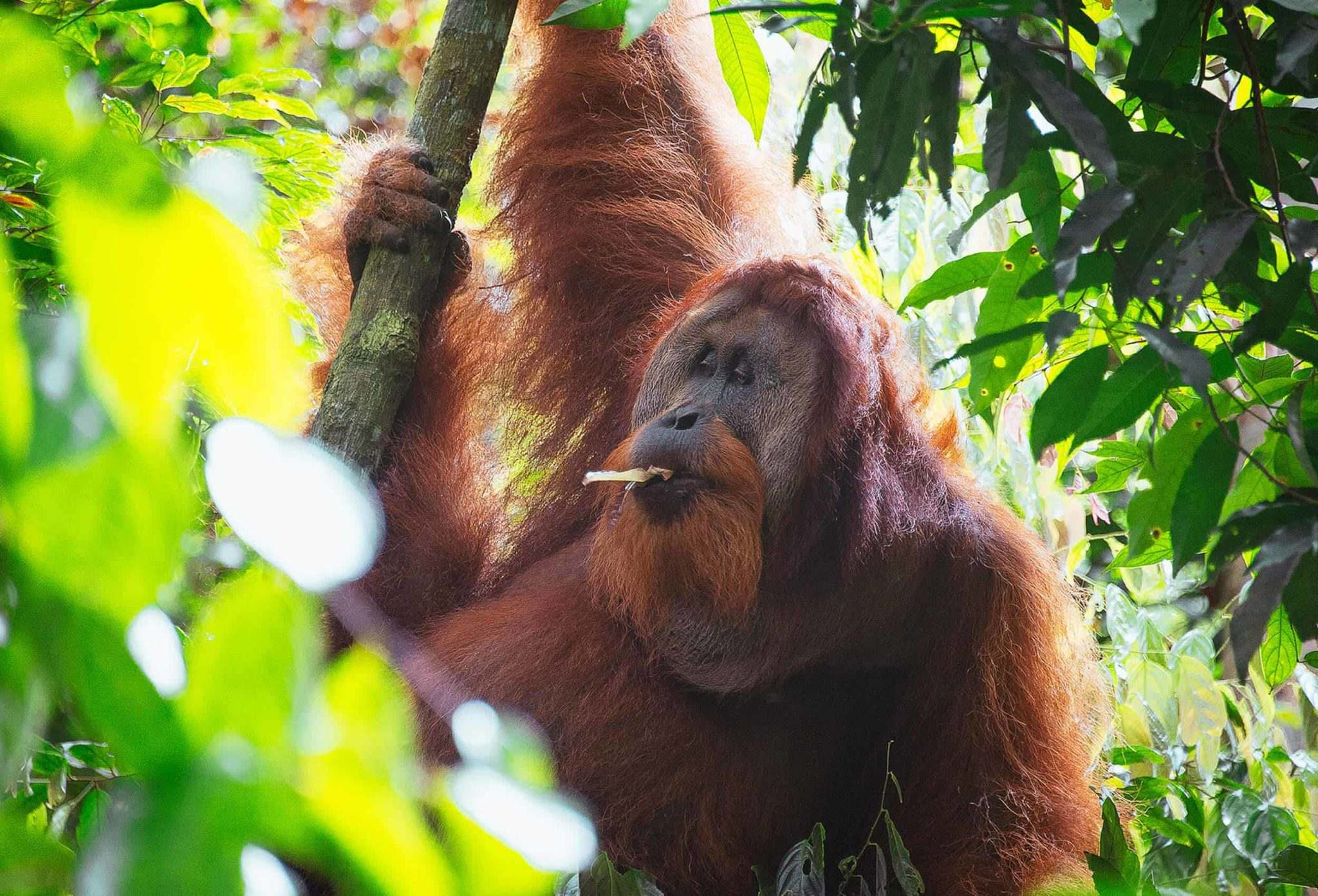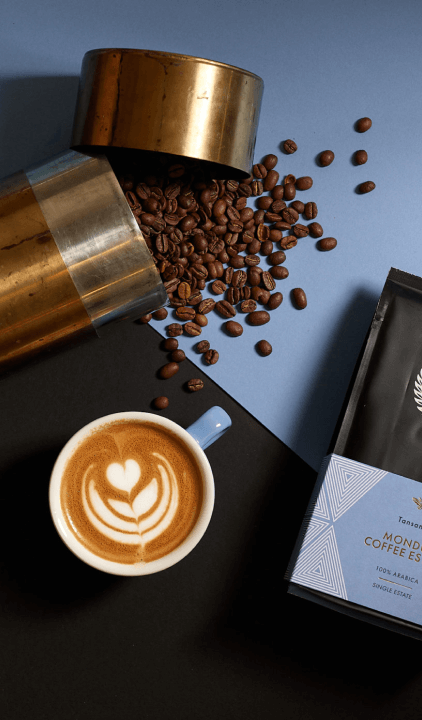OUR ORANGUTAN COFFEE
The Sumatran orangutans are threatened by extinction. Their home, the tropical rainforest of Sumatra, is being cut down by companies for wood and plantation land for the palm oil industry. Our raw beans come from smallholder families that cultivate their coffee plantations ecologically and are committed to protecting the rainforest and its animals. In return, the coffee farmers and the Sumatra orangutan protection programme each receive a premium for every kilogram of green coffee. Click here to learn more about the project on the Orangutan Coffee website.
In our travel report from 2017 you can find out more about the conditions on site.
Typical method of preparation
After picking, the pulp is removed from the raw beans using a coffee pulper that’s operated with a hand crank or motor. The wet parchment coffee is fermented in buckets or concrete pools for a few hours. Then it is washed with a little water before being spread out to dry on tarpaulin-covered terraces. The parchment skin is removed after a short time and before the coffee has dried. This type of processing is called “wet-hulled” and is only used in Indonesia. The green coffee is now dried further and turned over regularly.
Special classification
Our quality is rated as Mandheling Grade 1 Triple Picked. Mandheling is the name of an ethnic group native to northern Sumatra. It is believed that the name, which is commonly used in the coffee trade today, was the result of a linguistic or communicative misunderstanding. The special thing about Mandheling green coffee is that, unlike almost all other green coffees available worldwide, it is classified according to defects in the cup (sensory imperfections) and not according to external damage, its appearance or size. So, despite looking less than perfect on the outside, the green coffee can still be classified as Grade 1.
Methods of preparations
It can be prepared successfully with any method, but its density and complexity are particularly noticeable when using a French Press. Learn more about preparing coffee in a French Press here.
Do you want to know more about the project in Sumatra? Visit the project website: www.orangutan.coffee







